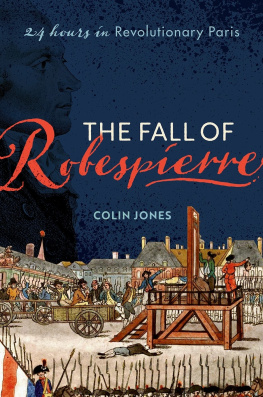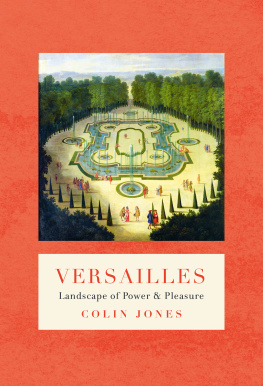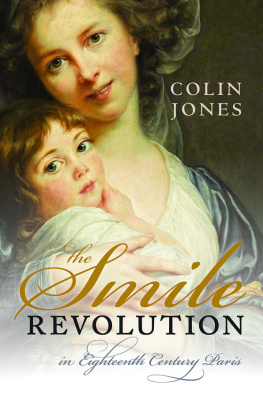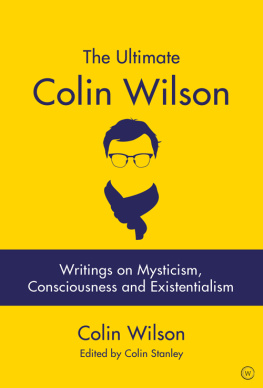ROUTLEDGE LIBRARY EDITIONS:
URBAN STUDIES
Volume 13
URBAN DEPRIVATION AND
THE INNER CITY
URBAN DEPRIVATION AND
THE INNER CITY
Edited by
COLIN JONES
First published in 1979 by Croom Helm Ltd.
This edition first published in 2018
by Routledge
2 Park Square, Milton Park, Abingdon, Oxon OX14 4RN
and by Routledge
711 Third Avenue, New York, NY 10017
Routledge is an imprint of the Taylor & Francis Group, an informa business
1979 Colin Jones
All rights reserved. No part of this book may be reprinted or reproduced or utilised in any form or by any electronic, mechanical, or other means, now known or hereafter invented, including photocopying and recording, or in any information storage or retrieval system, without permission in writing from the publishers.
Trademark notice: Product or corporate names may be trademarks or registered trademarks, and are used only for identification and explanation without intent to infringe.
British Library Cataloguing in Publication Data
A catalogue record for this book is available from the British Library
ISBN: 978-1-138-89482-2 (Set)
ISBN: 978-1-315-09987-3 (Set) (ebk)
ISBN: 978-1-138-03647-5 (Volume 13) (hbk)
ISBN: 978-1-315-17852-3 (Volume 13) (ebk)
Publisher's Note
The publisher has gone to great lengths to ensure the quality of this reprint but points out that some imperfections in the original copies may be apparent.
Disclaimer
The publisher has made every effort to trace copyright holders and would welcome correspondence from those they have been unable to trace.
URBAN DEPRIVATION AND
THE INNER CITY
EDITED BY COLIN JONES
CROOM HELM LONDON
CONTENTS
1979 Colin Jones
Croom Helm Ltd, 2-10 St John's Road, London SW11
ISBN 0-85664-713-6
British Library Cataloguing in Publication Data
Urban deprivation and the inner city
1. Cities and towns Great Britain
2. Great Britain Social conditions 1945
I. Jones, Colin, b. 1929
362.042'0941HT133
Printed in Great Britain by offset lithography by
Billing & Sons Ltd, Guildford, London and Worcester
The idea for this book was generated from a series of papers given to the SSRC Urban and Regional Economics Seminar Group.
My thanks are due to John Firn for his enthusiasm at the inception of the project and to John Parr not only for his encouragement throughout but also for his kindly forbearance at my innumerable requests for advice at vital stages of the editing. In addition I am indebted to Christine MacCallum who typed a large proportion of the final manuscript.
This book represents an attempt to study closely a topic of great policy importance. It is examined essentially through the medium of the case study, with contributors drawing on the experience of all the major conurbations of Britain. The contributors themselves come from a wide range of fields economics, geography, public administration, social policy and sociology to provide a comprehensive look at the question. An attempt is made by each contributor to pull together the policy implications of their analysis and many are critical of the government's strategy, some are very critical.
Dereliction, high concentrations of unemployment, drab and vandalised council estates, low educational achievements by schoolchildren, factory closures, decaying neighbourhoods and population decline in our cities and conurbations can all be regarded as inner city problems. Some of these phenomena can also be described as aspects of urban deprivation. If there are differences between the two, they are partly in the breadth of definition: the inner city problem for instance relates not just to people and the areas they live in but also to firms; and partly in spatial location, since urban deprivation is not necessarily found in the inner city.
But where is the inner city? This question is not easily answered; indeed it is much easier to recognise an inner city problem than to define where the inner city itself is. The Lambeth Inner Area Study (Great Britain, 1977a), for example, defines its study area by reference to where the inner city problems are, not the other way round. Indeed it is possible to identify those areas of the city where the problems of employment loss, high unemployment, public and private housing problems,and population decline, etc. are each individually confined or at least predominate. Thus Dicken and Lloyd () both focus on the nineteenth-century cores of our conurbations.
If we are to attempt to define the inner city it would be as a series of possibly overlapping zones or areas, one for each problem. These areas would not necessarily be coincident or even contiguous; there is for instance quite likely to be a band of local authority housing between the central industrial areas and the neighbourhoods of nineteenth-century housing still remaining. This no doubt long and tedious task would be something of a diversion and is not pursued here. A rough and ready guide perhaps would be the nineteenth-century urban areas and their subsequent redevelopment.
Urban deprivation, too, is not scattered at random; many of the concentrations of social problems associated with the concept are to be found in the inner parts of large towns and cities. They are, however, not confined to these areas; and indeed the deprived estate, Ferguslie Park, whose problems are examined in , is one such estate. The spatial definition in this respect is unimportant; the forces which fashion urban deprivation in the inner urban areas are not distinct from those which do so at the periphery.
The notion of urban deprivation is discussed in detail by Norris (); he argues that it should not be seen as a state but as a process. The same logic applies to the concept of the inner city problem. Thus the inner city problem is useful not as a spatial description of where the problems exist but as a way of looking at the problems in our urban areas. It provides an umbrella for an examination of (and for the government to tackle) the interaction of urban economic decline, physical decay and the concentrations of the socially disadvantaged, particularly poor people. It is this approach which we follow in this book, as we attempt to explore the divergent processes and interactions within and between different sectors of the urban system, and the subsequent problems which arise.
A Perspective on the Problem
Since the early 1960s all Britain's major cities have experienced massive industrial decline, particularly in their inner parts. In Central Clydeside, for example, the numbers employed dropped from 808,000 to 704,000 between 1961 and 1971; this decrease of 8.4 per cent was the largest fall of all the conurbations outside London. At the same time there was an increase in employment in the rest of Great Britain outside the conurbations of 7.9 per cent (Great Britain, 1977b). It is generally accepted that the most significant decline in employment has been in manufacturing industry rather than services. Dicken and Lloyd () examine the components of this decline for manufacturing industry in Manchester between 1966 and 1975; they note significant differences between the experience of that city and Liverpool.












